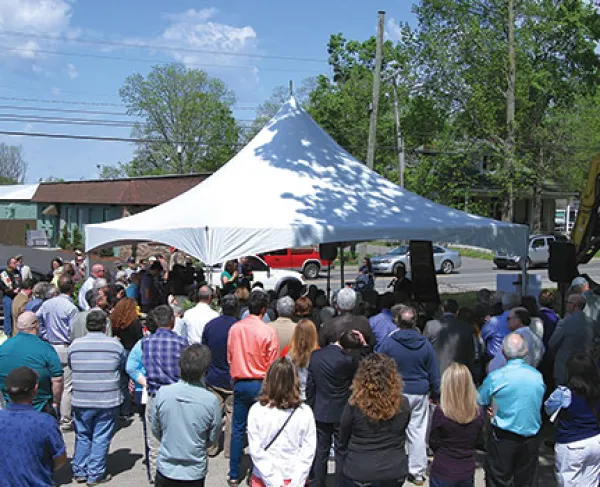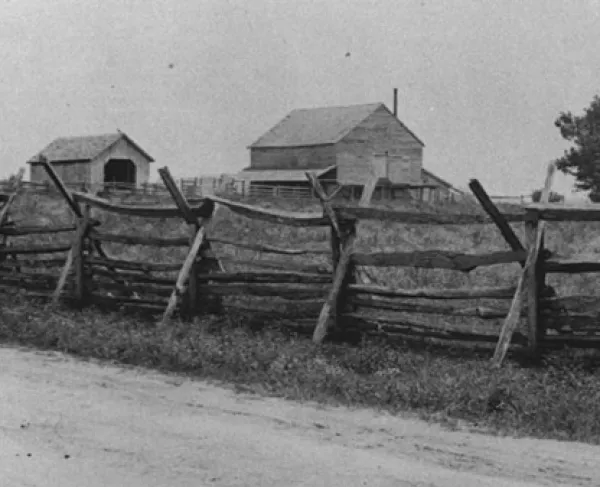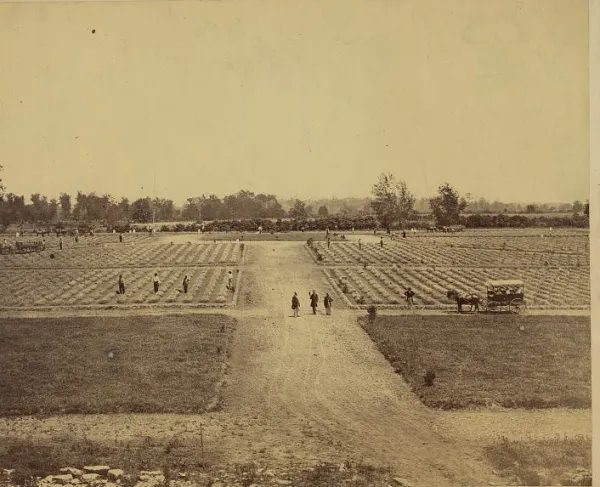Franklin: Then & Now
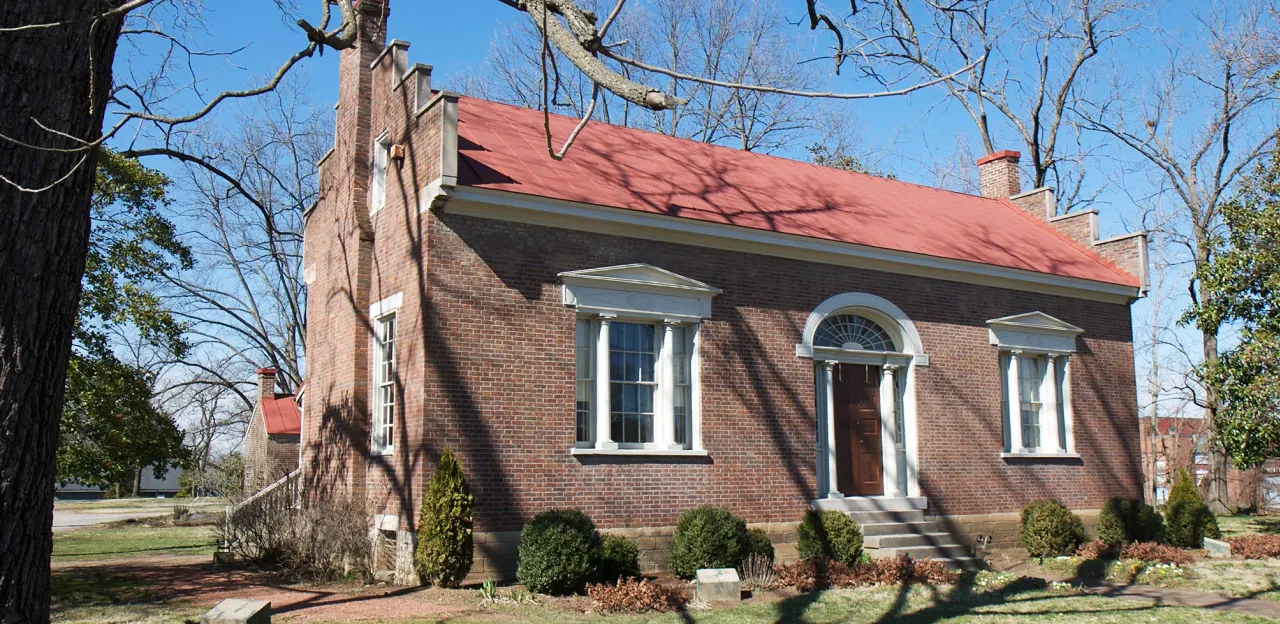
In this 2010 interview, historians, authors, and ardent preservationists Robert Hicks and Eric Jacobson discuss the historical role of the Second Battle of Franklin and the state of the battlefield today. As members of Franklin's Charge, Robert and Eric are working to help reclaim more of the Franklin battlefield for future generations.
Civil War Trust: What makes the Second Battle of Franklin (November 30, 1864) such an important part of the history of the American Civil War?
Robert Hicks: Its my belief the importance of the Second Battle of Franklin lies more on what didn’t happen because of it than what did. Southern historians and, eventually, most all the rest have for far too long focused on what happened – the “Five Bloodiest Hours of the American Civil War” – but, in the end, a futile bloodbath at best.
But if it was so inconsequential, then why could Arthur MacArthur, Jr., described it as second in importance only to Gettysburg? Could this be the same battle?
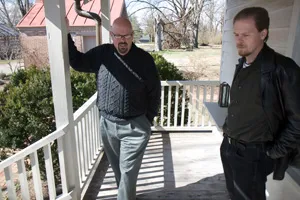
How could that possibly be when we have been taught for generations that the Second Battle of Franklin was nothing more than bloody, purposeless folly – As nothing more than a murderous and idiotic exercise by a drugged, half-deranged, petty, self-absorbed Confederate general?
But, disregarding any of the ‘what-ifs’ surrounding the battle that focus on the fact that, as opposed to Gettysburg, the Southern forces actually did break through, though they were ultimately driven back, there remains the issue of what didn’t happen because of Franklin. That’s what MacArthur and his fellow-students of the war understood.
You see, they understood that if the Union forces hadn’t been able to get past the Southern lines at Spring Hill, if a major battle had been fought there instead of Franklin on November 30, 1864, the chances of Hood’s success would have been multiplied and if, with that success, Hood was able to take Nashville much earlier, the morale of the Southern Cause could have driven the South on to fight another six to ten months and what that meant in human lives, both North an South, from battle and disease, might well have exceeded another 100,000 men and boys.
In my opinion, militarily, the South had lost the war after control of the Mississippi was lost. The only victory the South could now hope for was a political victory. So understand that by the time of Franklin, I hold no illusion that the battle could have had any ultimate effect in bringing about Southern Independence.
For me, and for the men like MacArthur who lived through those five bloodiest of hours, the real importance lies in those men and boys, from across the North and South who were eventually able to go home to their farms and families that might not have otherwise. That is, in the end, the real importance of the Second Battle of Franklin.
Franklin is known by Civil War buffs and historians as a battle that created an enormous number of casualties. How would one put this aspect of the battle in context?
Eric Jacobson: The casualties at Franklin were exceedingly heavy, particularly for the Confederates, considering the length of the battle. While the battle lasted about five hours the casualties were heavily concentrated in the first two hours, making the overall loss even more serious. It is interesting to note that while total casualties at Franklin were comparable to Pickett’s Charge, there were far fewer prisoners taken on November 30, 1864. There is little doubt that more men were killed and wounded at Franklin, reinforcing the notion that the combat was much worse and the Rebels actually had greater success at Franklin, which led directly to their heavy losses.
Much has been written and theorized about General John Bell Hood’s generalship at Franklin. How would you describe his state of mind and performance at Franklin?
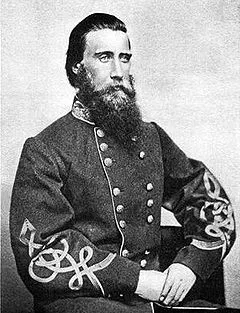
EJ: The documentary evidence is pretty clear that Hood knew exactly what he was doing at Franklin and he was not influenced by any outside factors, such as laudanum, anger, or Sally Preston, his girlfriend. Hood was certainly frustrated by what unfolded at Spring Hill the day before and his opportunity to destroy Schofield’s army before it escaped to Nashville was fast slipping away. In the end I think the facts indicate that Hood believed Franklin was his last chance to accomplish anything of substance, even at the risk of heavy casualties. In this regard, one can see eerie similarities to the third day at Gettysburg.
Robert, you just published a new historical novel, A Separate Country, that focuses on John Bell Hood’s postwar life. How did the Battle of Franklin affect Hood after the war?
RH: I believe I can honestly tell you that the affects of the Battle of Franklin were with him to the very end. Franklin, in so many ways, seems to be the watershed event of his life that haunts him until the day he dies. Like all failed leaders – politicians or generals – he seems obsessed to explain it all, to let history know it wasn’t his fault. He is forever writing those he served with trying to piece together his story. For a man who had married such an extraordinary woman, who would father eleven children by her in as many years and was trying to rebuild his life in New Orleans as he tried to build a career, it’s amazing how much time and energy he seems to have put into trying to understand and tell the story of the Tennessee campaign.
In the many accounts of the Battle of Franklin, the narrative tends to focus almost exclusively on the actions of the Army of Tennessee. What can you tell us about the Union side of this important battle?
EJ: The role of the Federal army at Franklin is usually underplayed, which leads to a somewhat slanted view of the battle. The Confederate army did not simply defeat itself at Franklin. Rather it ran into a battle tested and largely veteran force, one that took an effective position at Franklin and created a buzzsaw that was going to be difficult to break. Moreover, while many Confederate troops were motivated by coming home (i. e. the Tennesseans) and others were boosted by the rapid push north, the Federal soldiers were equally motivated by the thought of losing Nashville at this critical juncture of the war. They knew all too well how demoralizing the loss of Nashville and the area of Middle of Tennessee would be to the Union war effort and they were determined to prevent Hood’s army from doing so.
Despite the odds, the Army of Tennessee did achieve a breakthrough at the center of the main Union line that threatened the entire Federal position. A timely counterattack by Col. Emerson Opdyke’s reserve line helped to stem this breakthrough. Tell us more about this key action in the battle.
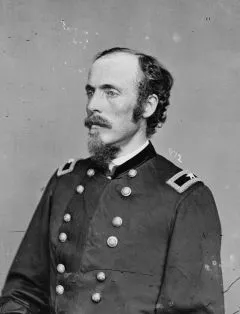
EJ: Interestingly, for many decades just how close Hood’s troops came to achieving success at Franklin has been casually glossed over. At one point the Confederate troops had accomplished exactly what Hood was attempting, which was to break the Federal army in the middle. At that point Hood hoped to crush Schofield’s army with its back against the Harpeth River. However, fate and circumstance are always a major factor in war and Franklin was no different. No one on the Confederate side knew that Col. Emerson Opdycke had disobeyed orders and ended up north of the Carter House, which was a perfect place from which to launch a counterattack to stem the sudden breakthrough in the middle. Also, three regiments of recruits who were in reserve near the Carter House did as much to stunt the Confederate success as anything. Those units, the 44th Missouri, 175th Ohio, and 183rd Ohio, some 2,000 men altogether, held their ground at great loss to themselves and provided Opdycke with enough time to get men forward and into the fray. Without the recruits fighting so tenaciously it is very likely that Opdycke alone would have been unable to turn back the flood of Confederates who had penetrated deep inside the Federal defensive perimeter.
Many historians have pondered why John Schofield’s Union forces did not counterattack the decimated Confederate army at Franklin on December 1, 1864. Why did the Union army retreat from Franklin? Did they miss an important opportunity?
EJ: Schofield simply wanted to get out of Franklin and had no desire to stay any longer than he needed to. Jacob Cox, who was headquartered at the Carter House, knew the awful beating the Southern army had taken and wanted to remain at Franklin and finish the job on Dec. 1, 1864, but Schofield overruled him. The opportunity the Federal army missed at Franklin was in having to wait two weeks to finish the job at Nashville. In fact, Capt. Levi Schofield wrote to Cox in 1870 and said he firmly believed the Battle of Nashville had essentially been fought at Franklin.
The Second Battle of Franklin was one of the Civil War’s most pivotal battles and yet much of the battlefield after the war was not preserved as it was at Shiloh, Gettysburg, or Vicksburg. Why was this?
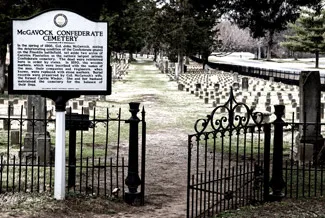
RH: I think the obvious reason is that Franklin wanted it to go away. Understanding that about 2,700 folks crawled out of their cellars the morning after the battle to find 9,200 casualties, it’s no wonder that they wanted the memory of the battle to somehow fade away forever. I’ve often pointed out, that save for the handful of folks who reburied the dead out at Carnton, there was little passion for remembering those five bloodiest of hours and their aftermath. The only monument raised up in the 19th Century to the battle was a cenotaph created to mark the spot where Cleburne fell and that was torn down and used as foundation rock for a new house in the early 20th Century. Even the Confederate Monument on the town square doesn’t single out the Confederates who fought and died at Franklin. It’s the standard ‘Lost Cause’ monument. Franklin simply wanted to move on. After all, you can make a good argument that Franklin is “Where the Old South Died” and I hardly believe that the town wanted that on their ‘Welcome to Franklin’ signage.
Modern preservationists like you have made great strides to reclaim and restore key parts of the Franklin battlefield experience. What can a modern visitor see if they were to visit the battlefield today?
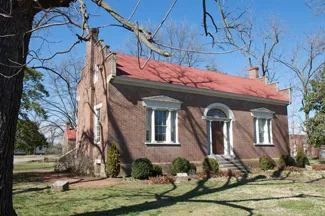
RH: Despite the efforts of so many over the years to bury history, there really is so much for the visitor to see. The historian, Dennis Frye, once told me he considers The Carter House to be “the single largest Civil War relic” there is. I consider the story of Tod Carter, dying in the same house he was born in to be among the best stories of the American Civil War.
Go there and touch those bullet-scared walls and then out to Winstead Hill where Hood stood and watched in horror as his army seemed to vanish into the blood and night that was Franklin.
Go to Ft. Granger and make your way through the center of earthen works of the Union fortifications and then make your way out to Carnton and walk through those rooms where Carrie McGavock proved herself to be the “consummate Southern Mother” as she made her way from boy to boy, with “two feet of blood on her skirts.”
“And as she cared over the dying, she spent the rest of her days caring over the dead.” No trip to Franklin would ever be complete that didn’t eventually lead you that cemetery in her backyard, the largest private military cemetery in America.
Earlier in the decade preservationists were able to reclaim a section of the Franklin battlefield where a Pizza Hut infamously stood. Now that land is a battlefield park. Are there other opportunities to reclaim more of this important battlefield?
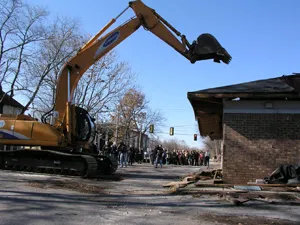
RH: To all those sites I have just named, I would send every visitor to the epicenter of the fight, the hallowed ground that the Civil War Trust and Franklin’s Charge have joined in partnership to reclaim. There on Columbia Pike, near where the Pizza Hut once stood, where you now see a Domino’s and a strip mall and small postage stamp lots with houses will someday – someday soon, if we have our way – be a battlefield park where 11 medals of honor were earned and Cleburne and so many of his comrades fell.
Like the Pizza Hut that stood across the street, the Dominos and that strip mall will disappear and in their place, a cotton gin will rise up. I would encourage every visitor to have their picture made in front of that Dominos so they can someday prove to disbelievers to come that it once stood on this hallowed place.
We have been told that this is not a good time to be trying to reclaim the battlefield, but if not now, then when?
Update: Since 2010, the Civil War Trust and its partners have successfully saved several tracts of land at the Franklin battlefield, including the site of the cotton gin where so much fighting took place and the strip mall that Robert Hicks mentions in this interview. The way has been paved for a battlefield park that would allow future generations to see this land as it was in 1864. For more information about Civil War Trust preservation efforts, click here.
Learn More: The Battle of Franklin
Eric Jacobson is the Director of Operations at the Battle of Franklin Trust, which is responsible for the operation and interpretation of the historic Carter House and Carnton Plantation on the Franklin battlefield. Eric is the author of For Cause and For Country: A Study of the Affair at Spring Hill and the Battle of Franklin. Eric is also a member of Franklin's Charge and the Civil War Preservation Trust. Eric is a resident of Spring Hill, Tennessee.
Robert Hicks, the author of The NEW YORK TIMES BESTSELLERS, The Widow of the South and Separate Country, was born and raised in South Florida. He moved to Williamson County, Tennessee in 1974.
He is founding chairman emeritus of Franklin’s Charge: A Vision and Campaign for the Preservation of Historic Open Space in the fight to secure and preserve both battlefield and other historic open space in Williamson County. Franklin’s Charge took on the massive mission of saving what remains of the eastern flank of the battlefield at Franklin – the largest remaining undeveloped fragment of the battlefield – and turning it into a public battlefield park. The American Battlefield Protection Program has called this endeavor “the largest battlefield reclamation in North American history.”
In December 2005, the Nashville Tennessean named him ‘Tennessean of the Year’ for the impact The Widow of the South has had on Tennessee, heritage tourism and battlefield preservation.
